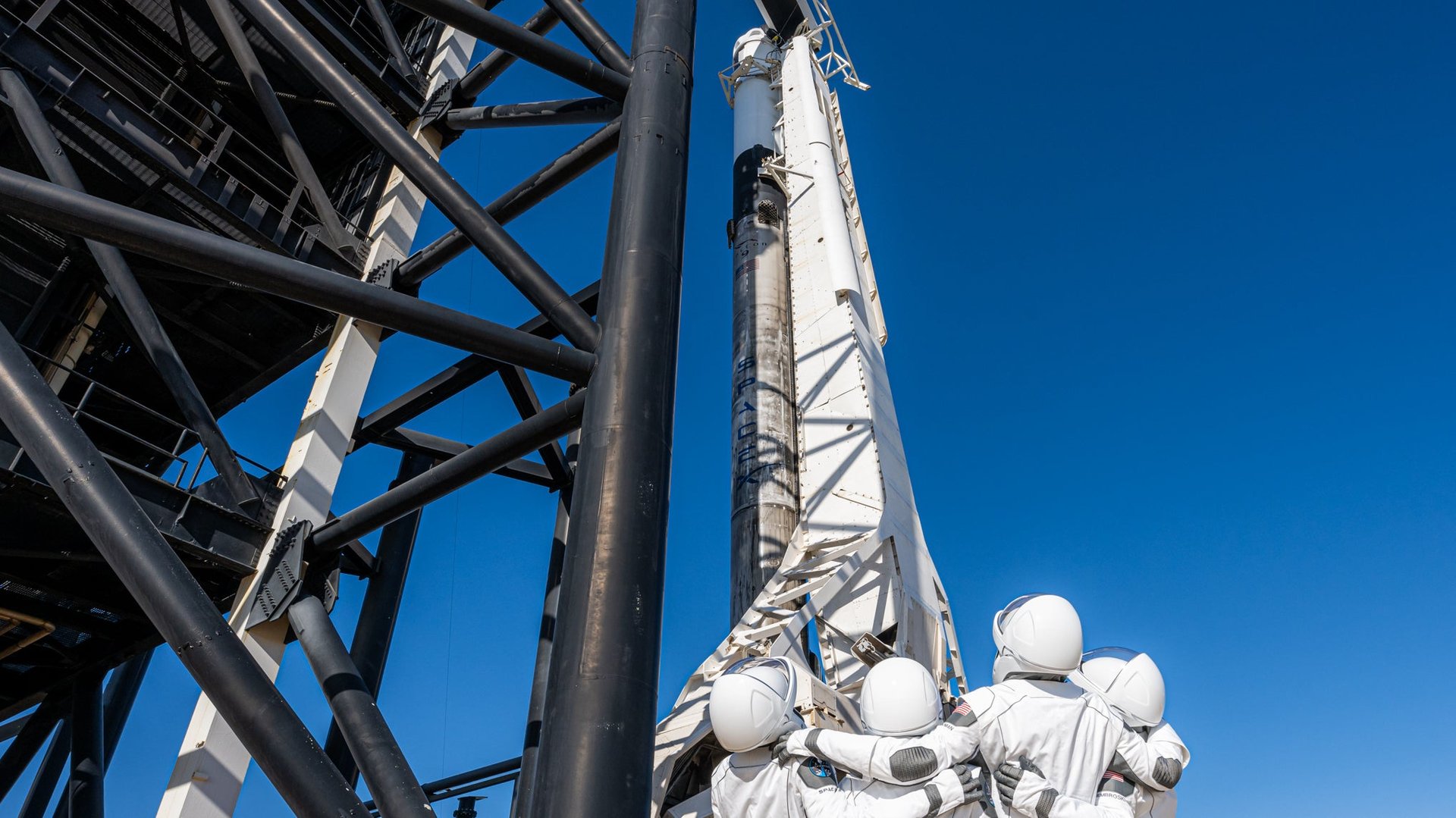Elon Musk found another billionaire to pay for his rocket
Dear readers,


Dear readers,
Welcome to Quartz’s newsletter on the economic possibilities of the extraterrestrial sphere. Please forward widely, and let me know what you think. This week: The Right $tuff, private space at war, and a potential strike at ULA.
🚀 🚀 🚀
One of Elon Musk’s repeat tricks is getting other people to pay when SpaceX tests innovative technology. To demonstrate the Falcon 9 rocket’s landing abilities, SpaceX simply strapped landing legs to rockets bought by NASA and other customers.
When it came to human spaceflight, NASA paid for the development of SpaceX’s crew Dragon. (The company invested some funds, but since neither it nor NASA will disclose how much, it is unlikely to be an impressive amount.) The US space agency also provided the test pilots: Experienced astronauts with backgrounds as flight test engineers.
As the company shifts its focus to Starship, the huge new rocket NASA wants to use to land astronauts on the Moon, there is more testing to do. Some of the components of future missions, particularly gear to communicate with astronauts and keep them alive, needs to be demo’d in a deep space environment. And true to form, Musk has found someone else to pay for it.
Jared Isaacman, the billionaire aerospace enthusiast who paid for the first tourist flight onboard SpaceX’s Dragon last year, is now paying for a series of missions, called Polaris, to demo new technologies for SpaceX. The first, Polaris Dawn, will take place no sooner than the fourth quarter of this year and will aim to do three things: fly higher than any previous Earth-orbiting mission, test out communications link with SpaceX’s Starlink network, and perform the first private spacewalk using brand-new space suits.
Isaacman politely declined to answer each time reporters asked him how much money he was paying for the chance to fly the mission, seemingly surprised to be asked, but it is, after all, the reason he gets to go. SpaceX charges NASA more than $50 million per seat on Dragon. Even if the company is only charging Isaacman its cost for each mission, SpaceX is likely to save hundreds of millions of dollars.
The crew Isaacman selected includes a former Air Force pilot who works for Isaacman’s companies, Scott Poteet, and two SpaceX engineers, Anna Menon and Sarah Gillis. They’ll be the first SpaceX employees to fly on the Dragon—and also a reminder that SpaceX could have easily crewed this mission itself, by throwing a rock inside their HQ and asking whoever it hits if they’d like to go.
For all the risk involved in spaceflight, the participants in this mission, just as with Inspiration4, won’t actually control the automated spacecraft in flight. In an emergency, they’ll push the automatic deorbit button. Their job is to be guinea pigs to make future passengers can survive. The most dangerous moments will be during the space walk, when the entire space capsule will be open to the vacuum of space.
Asked about this new paradigm for testing space hardware, Menon only said that SpaceX rigorously vets all its processes. But it’s a fascinating development in how we push technological frontiers. Menon’s husband is a NASA astronaut trainee, from the old tradition of the right stuff, a former NASA, SpaceX, and US Air Force flight surgeon. Menon is likely to beat her civil servant partner to orbit.
But don’t call it the privatization of space (no public goods are being put in private hands) or democratization (this isn’t a mass moment.) Instead, it’s the commodification of space: You couldn’t really pay to go to space five years ago. Now you can.
The moment harkens back to the days of Gilded Age tycoons commissioning expeditions to the north pole, or a bit later on, Howard Hughes designing and testing the aircraft his company built. Hughes, of course, wrecked his body and arguably his mind crashing those planes. Musk has learned: Let someone else take the thrill ride—and pay for it.
🌘 🌘 🌘
Imagery interlude
Here’s the first imagery from a NASA space probe launched by SpaceX in Dec. 2021, the Imaging X-Ray Polarimetry Explore, or IXPE.

You’re looking at “Cassiopeia A, an object consisting of the remains of a star that exploded in the 17th century.”
🔊🔊🔊
What’s up, Docs? When Google unveiled the precursor to Google Docs back in 2006, it was an obvious shot at Microsoft Word. By focusing on accessibility, scale, and collaboration, Google redefined productivity software—but also stumbled onto a different way of building community. Learn more about the Google Docs backstory in this week’s episode of the Quartz Obsession podcast.
Listen on: Apple Podcasts | Spotify | Google | Stitcher
🛰🛰🛰
Space debris
Workers at US rocket-maker consider a strike. Employees at United Launch Alliance, which makes rockets used by the US military, unanimously said they would strike if their contract demands are not met in an upcoming negotiation. The workers are mad about a vaccine mandate, but also about years of concessions as ULA has cut costs to compete with SpaceX, whose workforce is not unionized.
Could private satellite firms be targets in a Russian conflict? While some worry that private satellite constellation used by the US military for communication and surveillance purposes could be targeted if Russia invades Ukraine, others see such an escalation as unlikely.
SpaceX’s solar wallop is a warning to the rest of us. SpaceX lost 38 satellites due to a minor geomagnetic storm earlier this month, but without the ability to predict solar weather, we’re all vulnerable.
Europe has its own mega-constellation in mind. The European Commission has okayed a plan for a €6 billion internet satellite constellation with hundreds of spacecraft to improve regional connectivity.
China wants a satellite safety hotline. Communication between the US and China about space safety is limited, so China’s call for a formal mechanism for coordinating is notable and worth pursuing, even as the bickering between the two nations over the close approach of a SpaceX satellite to China’s space station show how difficult relations can be.
Your pal,
Tim
This was issue 123 of our newsletter. Hope your week is out of this world! Please send your favorite solar weather stories, space hardware you would pay to test, tips, and informed opinions to [email protected].